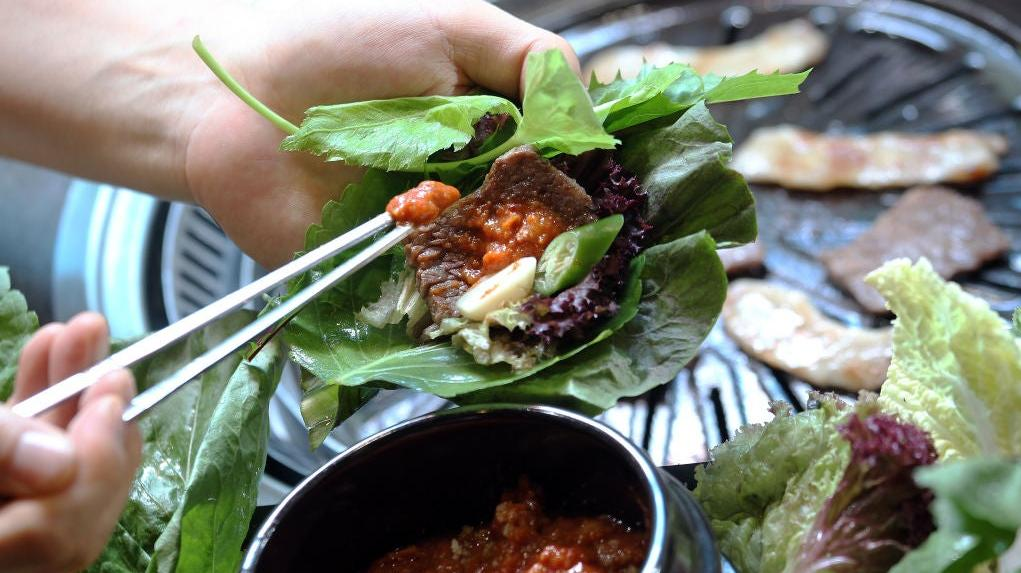Korean Barbecue Is All About These Dipping Sauces
Next to the meat and the banchan, a couple of sauces will hit the table. Here's how to use them.
I have a lot of conversations about Korean food, but many of them stem from one subject: Korean barbecue. That's because Korean barbecue is one of the very first experiences people have with Korean food when they're out at a restaurant. It's a hell of an introduction too, from the vast spread of banchan (side dishes) to the interactivity of cooking your meal over a live-fire grill right in front of you. There are a lot of intricacies to Korean barbecue, but I often get asked about the sauces that accompany this type of meal and what to do with them.
When you order grilled meat, you're likely to see two types of sauce land on your table: one is a simple mix of three common ingredients, while the other is a deeply complex and flavorful dip that can be used for a variety of purposes. Let's walk through them.
Sesame oil, salt, and black pepper
Of the two sauces, the simpler one is a humble mixture of sesame oil, salt, and black pepper. That's it. The ingredients are dumped into a tiny bowl right before serving, so you'll want to give it a quick stir with your chopsticks to evenly distribute the salt and pepper throughout the oil before using it.
You'll usually see this sauce accompanying meats like chadolbaegi (beef brisket) and samgyeopsal (pork belly). Both of these meats come unseasoned, and the sesame oil/salt/pepper condiment is there to season a bite right before it lands in your mouth. All you need to do is dip a small corner of cooked meat in the oil before you eat it, as a little goes a long way. You'll be rewarded with the bold flavor of toasted sesame oil that blooms in your mouth as you chew, mixing with the rich flavor of meat that you pulled straight off the grill.
Ssamjang
Ssamjang is a very thick all-purpose Korean dipping sauce that's a blend of gochujang (fermented red pepper paste), doenjang (fermented soybean paste), garlic, green onions, sesame oil, and sometimes a sweetener like sugar or honey. It has a bold, complex flavor that runs between salty, tart, savory, and sweet, with a slight kick of heat, and can be used on pretty much anything. I like dipping raw cucumbers into it, or pieces of crisp, cold lettuce.
You can dip a piece of grilled meat in ssamjang and eat it right away, but what I like to do is dab some ssamjang onto a piece of red leaf lettuce (or perilla, which is the green spade-like leaf you'll sometimes receive). Then, I take a little bundle of sticky white rice, nestle it inside the lettuce, then put a piece of grilled meat on top and eat it all in one big bite, using my hands. You can insert a piece of raw garlic or a piece of sliced green chile before chowing down too.
If you want to try some at home, ssamjang can be purchased premade; it's usually next to the gochujang in the Korean grocery store aisle, in a green plastic container (as opposed to gochujang's bright red packaging). It's a versatile sauce that you can use for a soup or stew base. I've even mixed it with mayo to make a beautiful spread for sandwiches.
Now you know exactly what those two sauces are doing on the table when you order Korean barbecue. Wield them wisely to create some of the best bites of food you'll ever have, and enjoy the grilling while you're at it. Don't forget to invite me next time.
